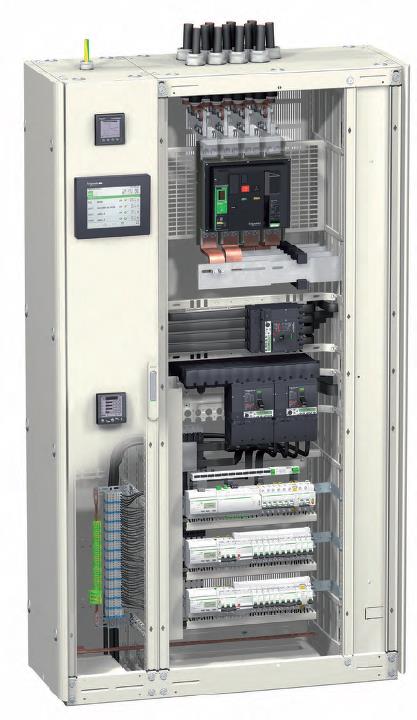INTERMATIC company is an experienced installer of control cabinets and automation systems. We offer best quality - price ratio on market using appropriate industrial materials and equipment. Our automation control cabinets are designed to provide robust, efficient, and scalable solutions for a wide range of industrial applications. We are dedicated to continuous innovation and excellence, ensuring that our clients can achieve optimal performance and productivity. Company works with leading brands on a automatization market such as ABB, SIEMENS, Festo, Schneider Electric, ETI, Legrand, Phoenix contact. We offer, to our clients best solutions for their demands.
Our company has a huge experience in automation installation, repairing and maintenance service. We working with all leading manufactures of automation systems on a market. From small projects for private use, till multi building solutions, business centers and manufacturing facilities.
As a experienced system installer, we can easily find the best solution for each client specific requirements. Thanks to our extensive resources, our lead times are short and our performance is always of the highest quality.
Our offering
Project execution: planning, installation and project development of automation cabinets.
Repairing service.
Technical maintenance.
Advisory services: deployment and training
Our company has a huge experience in automation installation, repairing and maintenance service. We working with all leading manufactures of automation systems on a market. From small projects for private use, till multi building solutions, business centers and manufacturing facilities.
As a experienced system installer, we can easily find the best solution for each client specific requirements. Thanks to our extensive resources, our lead times are short and our performance is always of the highest quality.
Our offering
Project execution: planning, installation and project development of automation cabinets.
Repairing service.
Technical maintenance.
Advisory services: deployment and training






Automation cabinet development involves designing and building cabinets or enclosures that house electrical
components, control systems, and automation equipment for industrial or commercial applications. Here's an
overview of the key steps involved in automation cabinet development:
1. Requirements Analysis:
· Begin by gathering requirements and specifications for the automation cabinet, including functional
requirements, environmental conditions, space constraints, safety regulations, and integration with existing
systems.
· Consult with stakeholders, including engineers, designers, project managers, and end-users, to ensure that
all relevant requirements are identified and addressed.
2. Design Planning:
· Develop a design plan that outlines the layout, configuration, and components of the automation cabinet.
Consider factors such as equipment placement, cable routing, cooling requirements, access doors, and safety
features.
· Select suitable materials and construction techniques for the cabinet enclosure, taking into account factors
such as durability, corrosion resistance, electrical insulation, and thermal management.
3. Component Selection:
· Choose appropriate electrical components, control devices, sensors, actuators, and communication modules
based on the requirements and specifications of the automation system.
· Consider factors such as reliability, performance, compatibility, and cost when selecting components, and
ensure compliance with relevant industry standards and regulations.
4. Electrical Design:
· Develop an electrical schematic or wiring diagram that illustrates the connections and interconnections
between components within the automation cabinet.
· Design the power distribution system, including circuit breakers, fuses, relays, contactors, and terminal
blocks, to ensure safe and reliable operation of the cabinet.
5. Control System Integration:
· Integrate control systems, programmable logic controllers (PLCs), human-machine interfaces (HMIs), and
other automation devices into the cabinet design.
· Develop control logic, programming, and user interfaces to enable monitoring, control, and visualization of
the automation system's operation.
6. Prototyping and Testing:
· Build a prototype of the automation cabinet to validate the design, functionality, and performance before
full-scale production.
· Conduct thorough testing and validation of the prototype, including functional testing, electrical testing,
environmental testing, and safety testing, to ensure compliance with specifications and standards.
7. Manufacturing and Assembly:
· Once the prototype has been successfully tested and validated, proceed with manufacturing and assembly of
the automation cabinets.
· Fabricate cabinet enclosures, panels, and mounting hardware using appropriate manufacturing processes,
such as machining, welding, bending, and painting.
· Assemble electrical components, wiring, and control systems into the cabinet enclosure according to the
design specifications, ensuring proper alignment, insulation, and connection.
8. Installation and Commissioning:
· Install the completed automation cabinets at the intended location within the industrial or commercial
facility.
· Perform commissioning, calibration, and startup procedures to verify the functionality and performance of
the automation system and ensure seamless integration with other systems.
9. Documentation and Training:
· Create comprehensive documentation, including user manuals, wiring diagrams, bill of materials (BOM), and
maintenance procedures, to assist with installation, operation, and maintenance of the automation cabinets.
· Provide training and support to end-users, maintenance personnel, and operators to ensure proper
operation and troubleshooting of the automation system.
10. Maintenance and Support:
· Establish a maintenance and support plan to monitor, maintain, and service the automation cabinets
throughout their operational lifespan.
· Implement proactive maintenance practices, such as preventive maintenance schedules, condition
monitoring, and remote diagnostics, to minimize downtime and optimize system reliability.
By following these steps, you can effectively develop automation cabinets that meet the requirements and
specifications of industrial and commercial automation applications, ensuring reliable operation, safety, and
performance.
